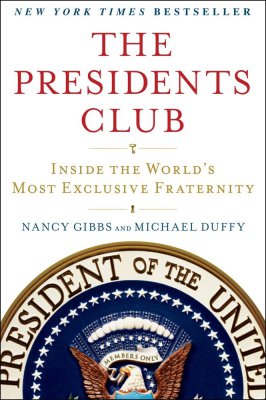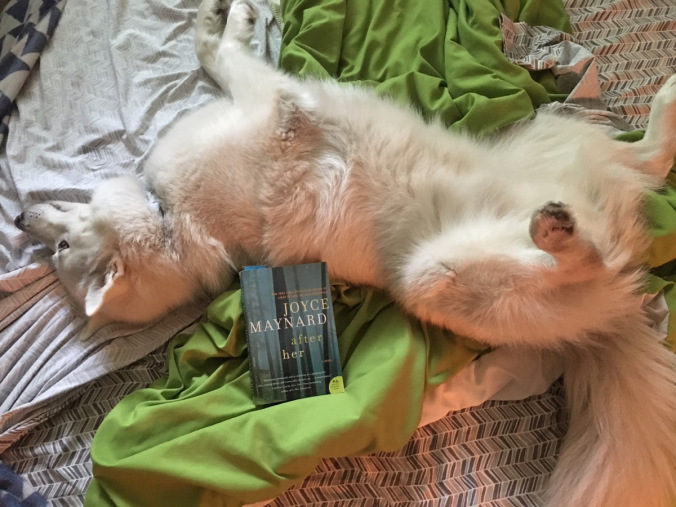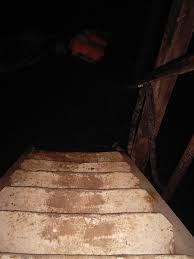John Cheever …
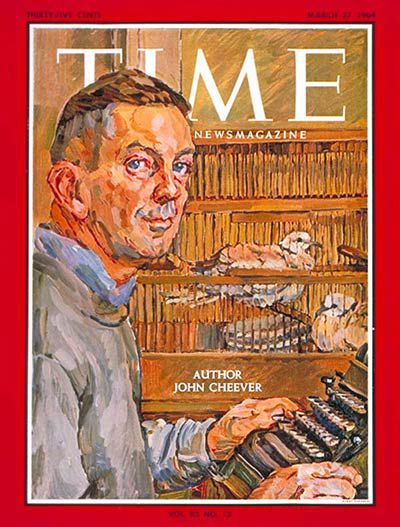
John Cheever (1912-1982) was an American novelist and short story writer. He is sometimes called “the Chekhov of the suburbs”. His fiction is mostly set in the Upper East Side of Manhattan, the Westchester suburbs, old New England villages based on various South Shore towns around Quincy, Massachusetts, where he was born, and Italy, especially Rome. He is now recognized as one of the most important short fiction writers of the 20th century. While Cheever is perhaps best remembered for his short stories (including “The Enormous Radio”, “Goodbye, My Brother”, “Th Five-Forty-Eight”, “The Country Husband”, and “The Swimmer”), he also wrote four novels, comprising The Wapshot Chronicle (National Book Award, 1958), The Wapshot Scandal (William Dean Howells Medal, 1965), Bullet Park (1969), Falconer (1977) and a novella Oh What a Paradise It Seems (1982).
A compilation of his short stories, The Stories of John Cheever, won the 1979 Pulitzer Prize for Fiction and a National Book Critics Circle Award, and its first paperback edition won a 1981 National Book Award.
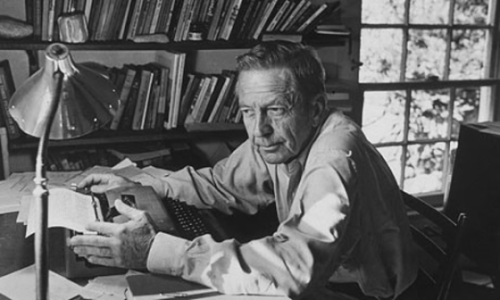
“When I was younger I used to wake up at eight, work until noon, and then break, hollering with pleasure; then I’d go back to work through to five, get pissed, get laid, go to bed, and do the same thing again the next day.”
Born and raised in Quincy, Massachusetts he moved to Boston in 1932 and then on to New York. He got married in 1941 and enlisted in the Army in 1942. His first collection of short stories, The Way Some People Live, was published in 1943 to mixed reviews. After the war, Cheever moved his family to an apartment building at 400 East 59th Street, near Sutton Place, Manhattan.
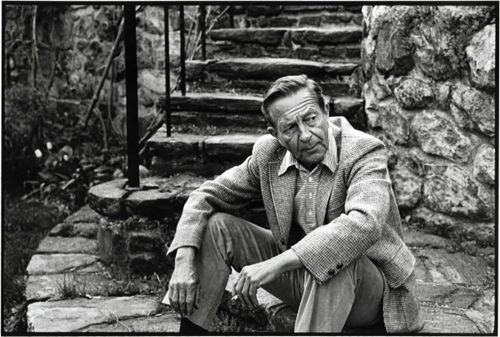
During the late 1940s, John Cheever worked to an unconventional routine. In the morning he would put on his business suit, leave his apartment, and catch the lift downstairs with any commuters. Then, when they reached the ground floor, he would keep going, down to the basement, where he’d walk to his favourite storage room, strip down to his boxer shorts and spend the morning writing. At noon he put his suit back on and headed back upstairs. Lunch followed, then a leisurely afternoon.
He continued to write almost every morning for the rest of his life. As his career progressed, the writing sessions grew shorter and shorter, while cocktail hour became longer and longer. By the 1960s, his working day was usually over by 10:30 A.M.
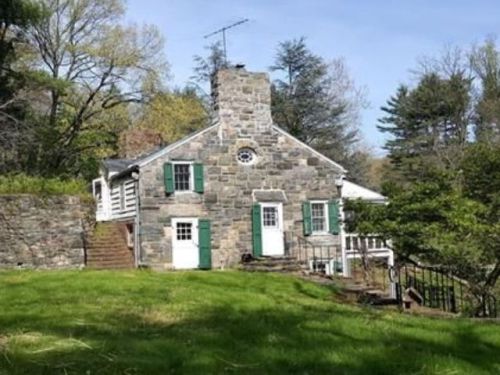
In 1961 his family moved to a stately, stone-ended Dutch Colonal farmhouse in Ossining, on the east bank of the Hudson. He lived and wrote there until his death in 1982.
His daughter recalled where he chose to write …
“My father very purposefully never had a place to write, and he always wrote in the humblest place in the house. Sometimes, like when he was on the cover of Time,_ _he pretended he wrote in the room that we called the Boyfriend Room, because it was where my boyfriend stayed, off the kitchen. But he didn’t always write in the Boyfriend Room at all. He would take his typewriter all over. When my brother went to boarding school, he would work in his room, and when I went to college he would work in my room. I think he felt that if he settled, physically, as a writer, or if he prepared in any way for the ‘visit from the muse,’ it wouldn’t happen. At one point, famously, we were all home, so he pitched a tent on the lawn and wrote in the tent.”
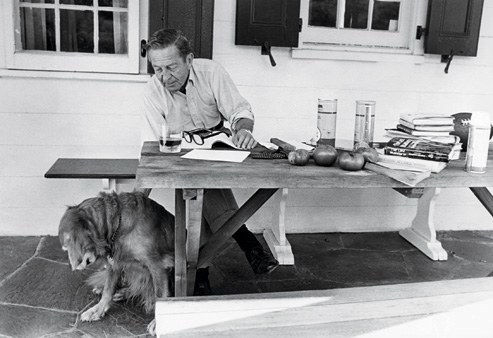
John Cheever and the family’s golden retriever, Maisie, on the porch of his Ossining, New York, house, October 6, 1979. By Paul Hoseifros/The New York Times/Redux.
Advertisements Share this:

